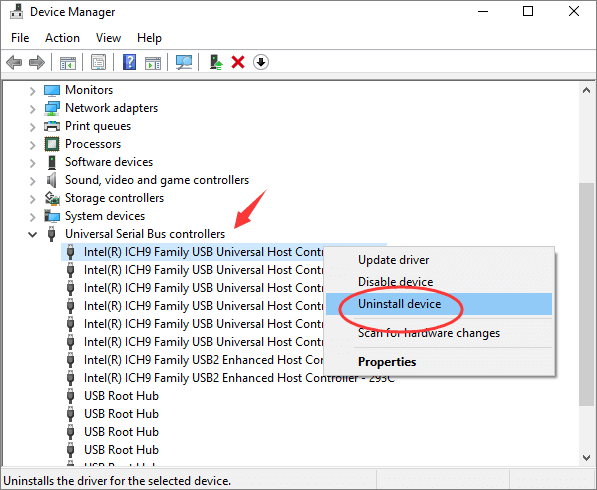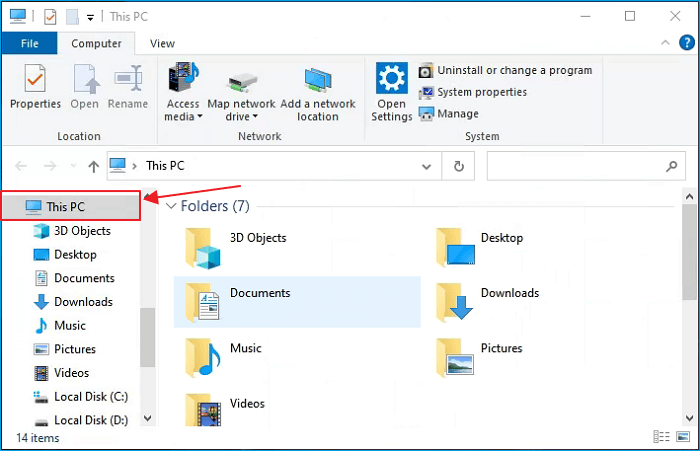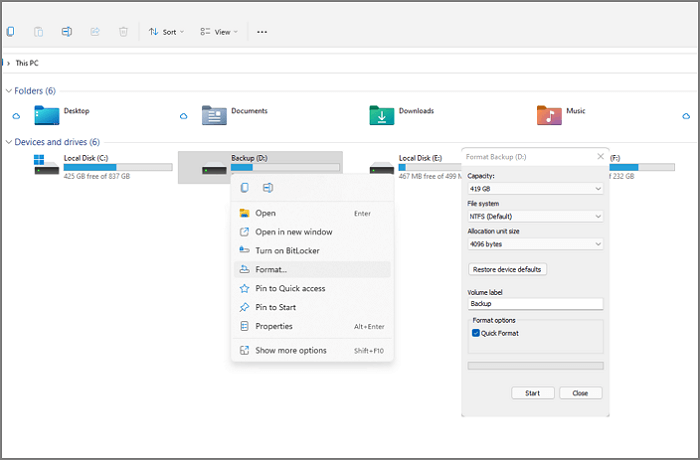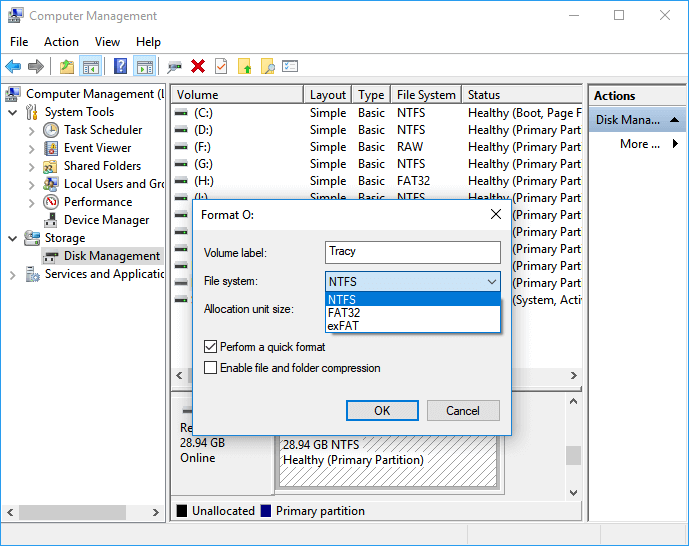How to Format SD Card on Windows 10 [Easy & Efficient]
Need to format an SD card on Windows 10? If you don't know how to start the process, we're here to help. Our article aims to guide you through the necessary steps to format an SD card using methods and tools available on Windows 10. First, let's learn why or when we need to format our SD cards on Windows 10.
Why Format SD Card on Windows 10
Why format SD card? Because different SD card formats are suitable for different devices. Hence, the main reasons for this question are as follows:
- Change the file system:
To adapt to the requirements of different devices, such as digital cameras, game consoles, and smartphones, we need to change the file system format of the SD card by formatting it.
- Fix corrupted SD card:
When your SD card encounters errors or other problems, you can fix them by formatting. Be sure to try it out before investing in a new card.
- Erase data to get space:
When your SD card faces a low disk space error, or you want to start a new project, you can format it to get more free space.
Now, we're going to learn three ways to format an SD card. So, connect your SD card to a Windows PC. Well, if you can't find your SD card on your PC, click the link below to check.

SD Card Not Detected Windows 11/10
This post covers 9 approaches in all to solve SD card not detected or SD card not showing up Windows 11/10 problem.
Format SD Card on Windows 10 - Full Guide on 4 Ways
There are a few different ways to format your SD card on Windows 10. In this guide, you can see all the steps required in the process. Based on your needs and computer knowledge, choose your preferred method and start formatting your SD card for future use. Now, let's start with the first way.
Way 1. Format SD Card on Windows 10 via Qiling Disk Master - Easy
Qiling Disk Master Free is a free and multifunctional third-party disk manager. It can help format SD cards/USB/external SSDs with simple clicks. It is easy to use, and you will get a timely prompt when you execute each step, making it friendly to beginners. Besides, it is widely compatible with all Windows versions like Windows 11/10/8/7/Vista and Windows XP.
Now, download the free tool and follow the guide to format your SD card.
Step 1. Find your SD card and right-click the partition you want to format and choose "Format".
Step 2. Set a new partition label, file system (NTFS/FAT32/EXT2/EXT3/EXT4/exFAT), and cluster size to the selected partition.
Step 4. Click the "Proceed" to continue.
Step 3. Click "Yes" on the pop-up window to start formatting your SD card.
Every user can simply use this SD card formatting software with just a few simple clicks. It can efficiently change the SD card file system format, empty the SD card to gain storage space, and make the SD card new again.
Way 2. Format SD Card on Windows 10 via File Explorer - Medium
File Explorer is also a nice built-in tool for managing your disk. Using this application, you can also format your SD card to NTFS, FAT32, exFAT, etc. This process might take some time, depending on capacity. Here are the steps:
Step 1. Put the SD card into your computer and press Windows + E.
Step 2. Click on "This PC" and locate your SD card.

Step 3. Right-click it and choose "Format."
Step 4. Then, a new Window will appear, and select the file system you want.

- Notice:
- Choose NFTS if you decide to use the SD card on Windows systems only or FAT32 if you use it on multiple types of devices. Also, if you're formatting the SD card for the first time, make sure the box next to Quick Format is unchecked. However, if you have formatted your SD card before, you need to check the Quick Format checkbox.
Way 3. Format SD Card on Windows 10 via Disk Management - Medium
Disk Management is another tool available in Windows 10 that can help you format SD cards. With it, you can format SD cards quickly and efficiently. Here's how to format your target SD card using this tool:
Step 1. Right-click on the Windows and choose "Disk Management."
Step 2. Make sure your SD card has been inserted into the PC and locate it in Disk Management.
Step 3. Right-click it and choose "Format."
Step 4. Select the file system and choose "Perform a quick format."

Way 4. Format SD Card on Windows 10 via Diskpart - Difficult
Diskpart is a built-in Windows application that takes control of your hard drive and can be used to format SD cards. When entering related Diskpart commands, be careful. Otherwise, it is easy to suffer data loss. Here are the steps on how to format an SD card using Diskpart on Windows 10:
Step 1. Enter cmd in the search box and choose Command Prompt. Run it as administrator.
Step 2. Type diskpart and press Enter.
Step 3. Enter the following commands and hit Enter after each command:
- list disk
- select disk 2 (Replace 2 with the correct SD card number)
- list volume
- Select volume 10 (Replace 10 with the right number)
format fs=ntfs quick (Replace NTFS with the file system you want)

Using the four ways, you can format SD cards. If you meet problems during the process, you can click the links below to check:
Conclusion
We've outlined four efficient and safe ways to format an SD card on Windows 10, so you can use it with different device formats. You can choose any method you think is suitable and easy to use.
However, if you are new to Windows operation, I would recommend you install Qiling Disk Master to format SD cards because Diskpart commands and other methods can easily make you suffer data loss.
Format SD Card Windows 10 FAQs
We've discussed many ways to format SD cards. If you have more questions about formatting SD cards in Windows 10, please refer to the answers below:
1. How do I format my Micro SD card on my computer?
To format a Micro SD card on your computer, follow the steps here:
Step 1. Open Disk Management and locate your Micro SD card.
Step 2. Right-click the SD card and click "format."
Step 3. Choose the file system and click the "perform a quick format" option.
2. Should I format my SD card to exFAT or FAT32?
Is exFAT the same as FAT32? The answer is no. However, which one you should choose depends on your usage. If you're sure you won't copy or move files larger than 4GB, FAT 32 is the best choice. On the other hand, if you always work with large files, use exFAT. Likewise, small storage devices like SD cards and USBs are better suited for FAT32, while external hard drives can use exFAT.
3. Can I format an SD card to FAT32 on Windows 10?
Sure, you can. There are many built-in tools helping format an SD card. But if you don't have much experience in formatting, using a reliable third-party tool is a nice choice, such as Qiling Disk Master.
Related Articles
- How Do I Clone Windows to New Computer/PC? Your Checklist in 2023 [New]
- How to Run SSD SMART Test Safely [SMART Attributes Explained]
- 3 Ways: How to Increase C Drive Space in Windows 10/8/7
- 2 Best Disk Manager for Windows Server Free Download [Free & Paid]